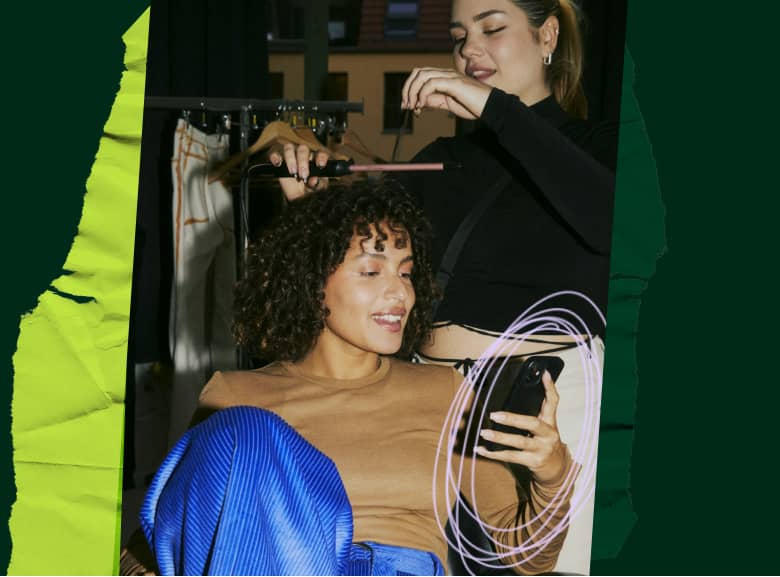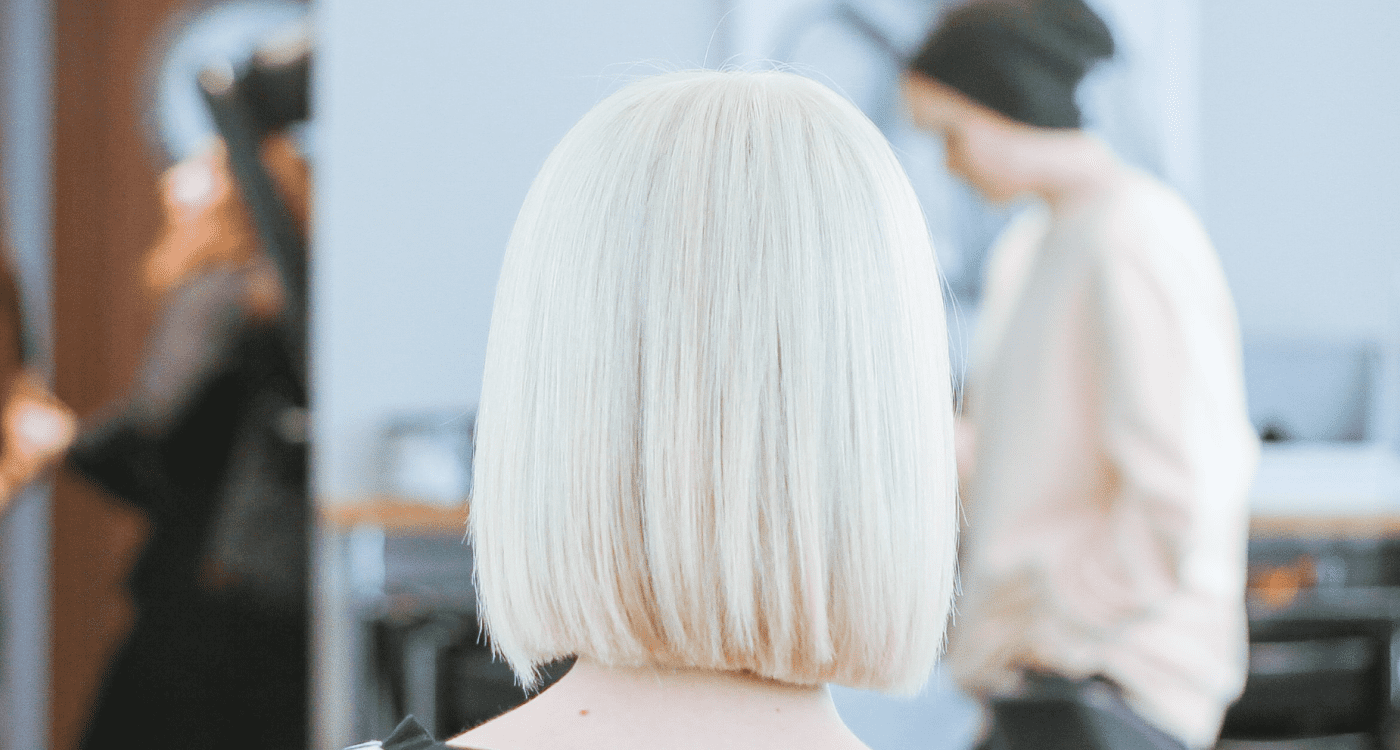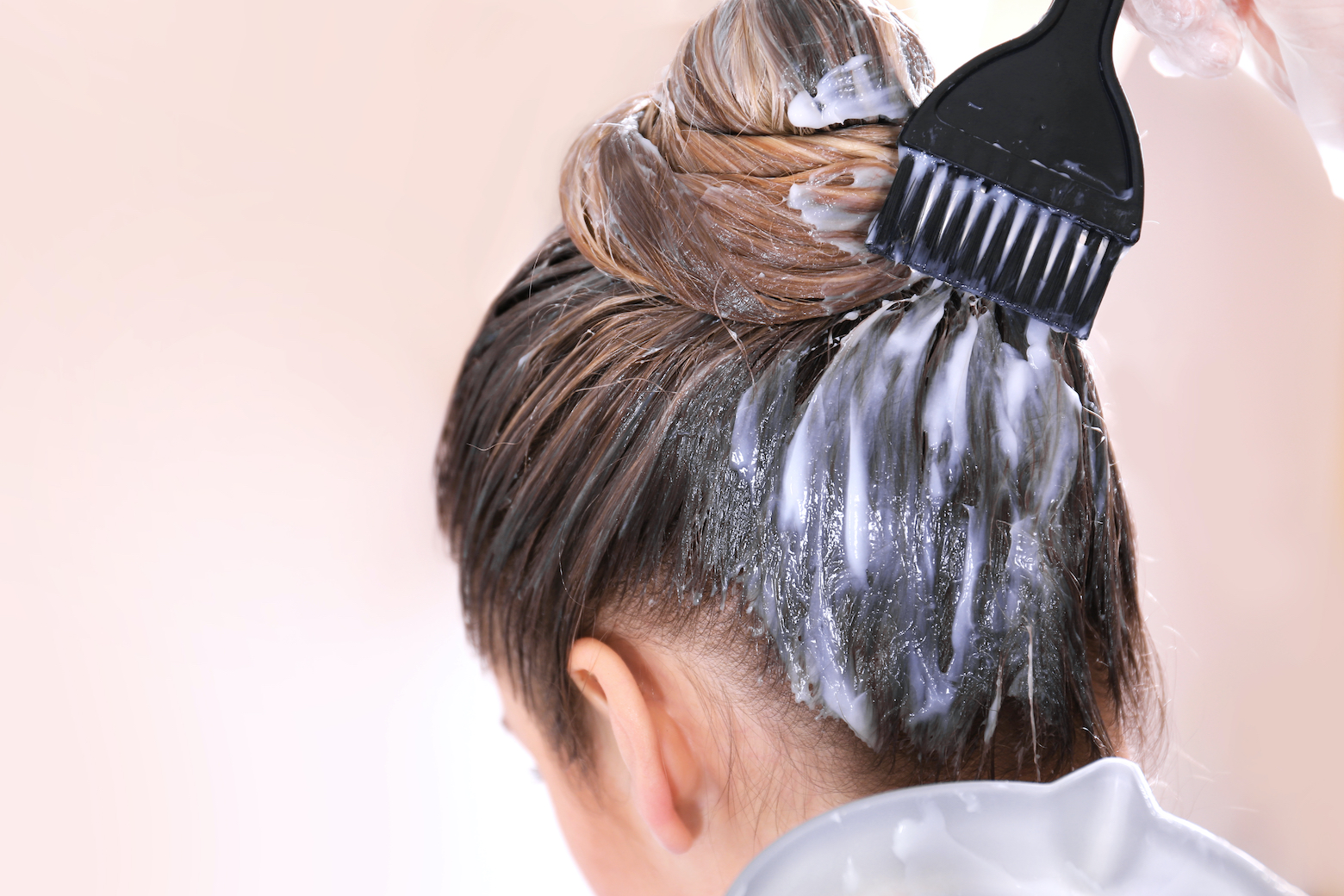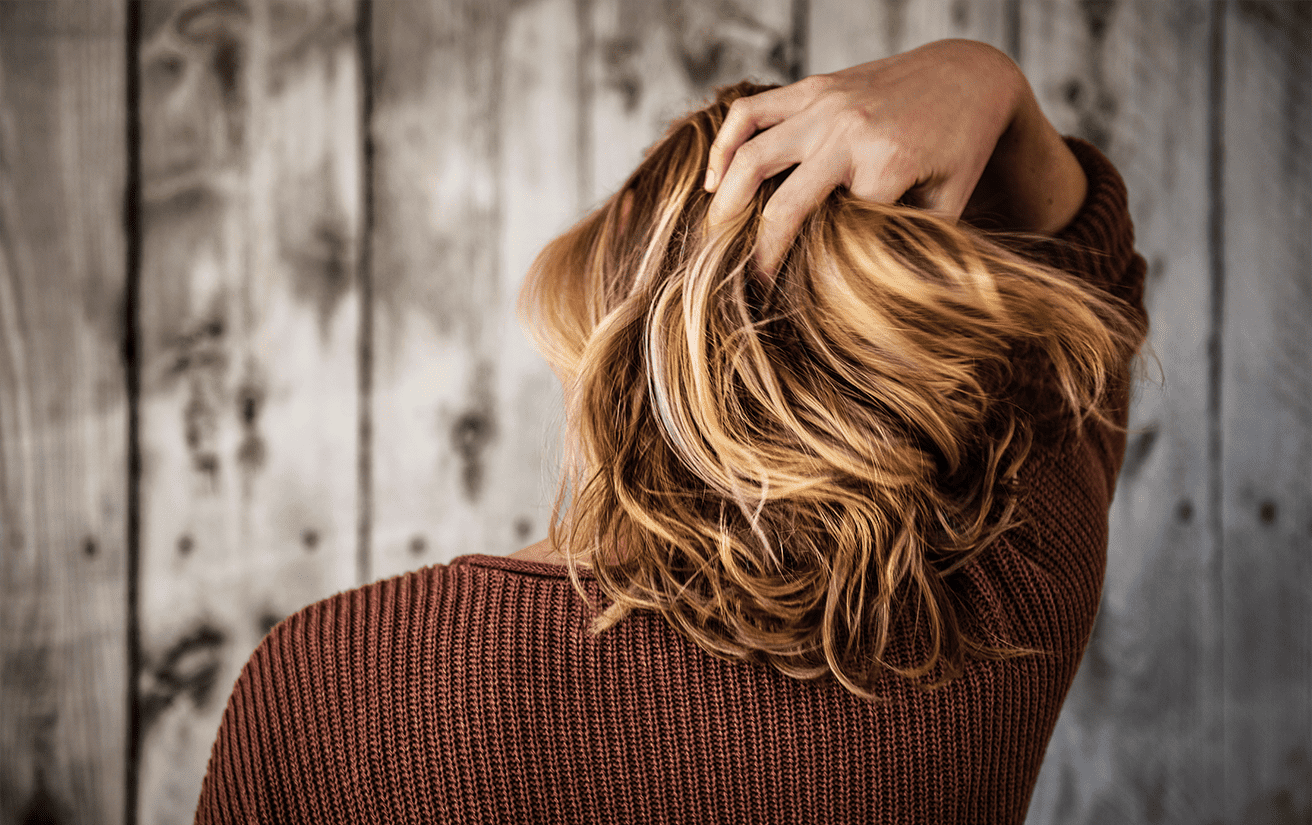82 Beauty Industry Statistics for 2023: From Hair Trends to Skin Care
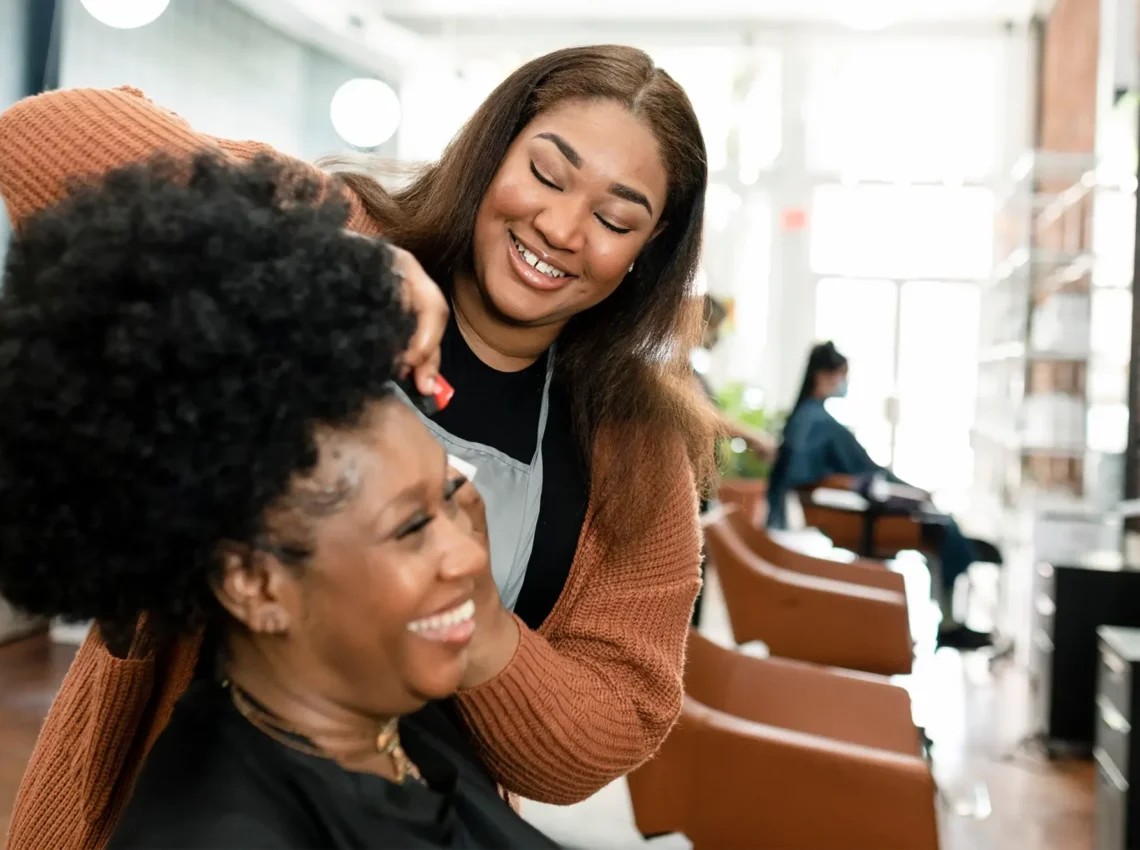
Feathered haircuts, glass skin, and colorful nail art were just a few of the top beauty trends that took hold during 2022 as consumers experimented with bold style choices amid the end of the pandemic. Nearly every facet of the beauty industry — including hair salons, skin care, makeup, nail care, cosmetic dermatology, and men’s grooming — reaped the benefits, but new consumer preferences such as clean beauty and at-home treatments have changed the beauty landscape.
In this article, we’ll cover the beauty industry statistics that’ll have the most impact on the market in 2023, from generating revenue and top marketing strategies to shifting consumer values and more.
Table of contents
Beauty industry statistics
With the explosive growth of influencer marketing, digital channels, and boutique product lines, the beauty industry underwent a COVID-19-driven glow-up in 2022. Gone are the days of beauty and self-care aisles dominated by big-name brands. Today’s Gen Z and millennial consumers value clean, quality ingredients, niche products, and responsible business practices — and they’re willing to pay a premium for them.
This new generation of beauty shoppers has forever changed the way health and beauty companies manufacture and market their goods and services. Below are a few highlights demonstrating just how much of an impact they’ve had this year:
- Americans spend an average of $110 every month on beauty, fitness, and wellness, with women averaging $124 per month and men $94 per month. (StyleSeat)
- 58% of Americans would not cut beauty spending despite a looming recession. (StyleSeat)
- The global beauty industry is worth $511 billion and is expected to surpass $716 billion by 2025. (Common Thread Collective)
- Total revenue from the global cosmetics market is set to increase by 11.6% in 2023 — the second highest growth rate in at least 13 years (Statista).
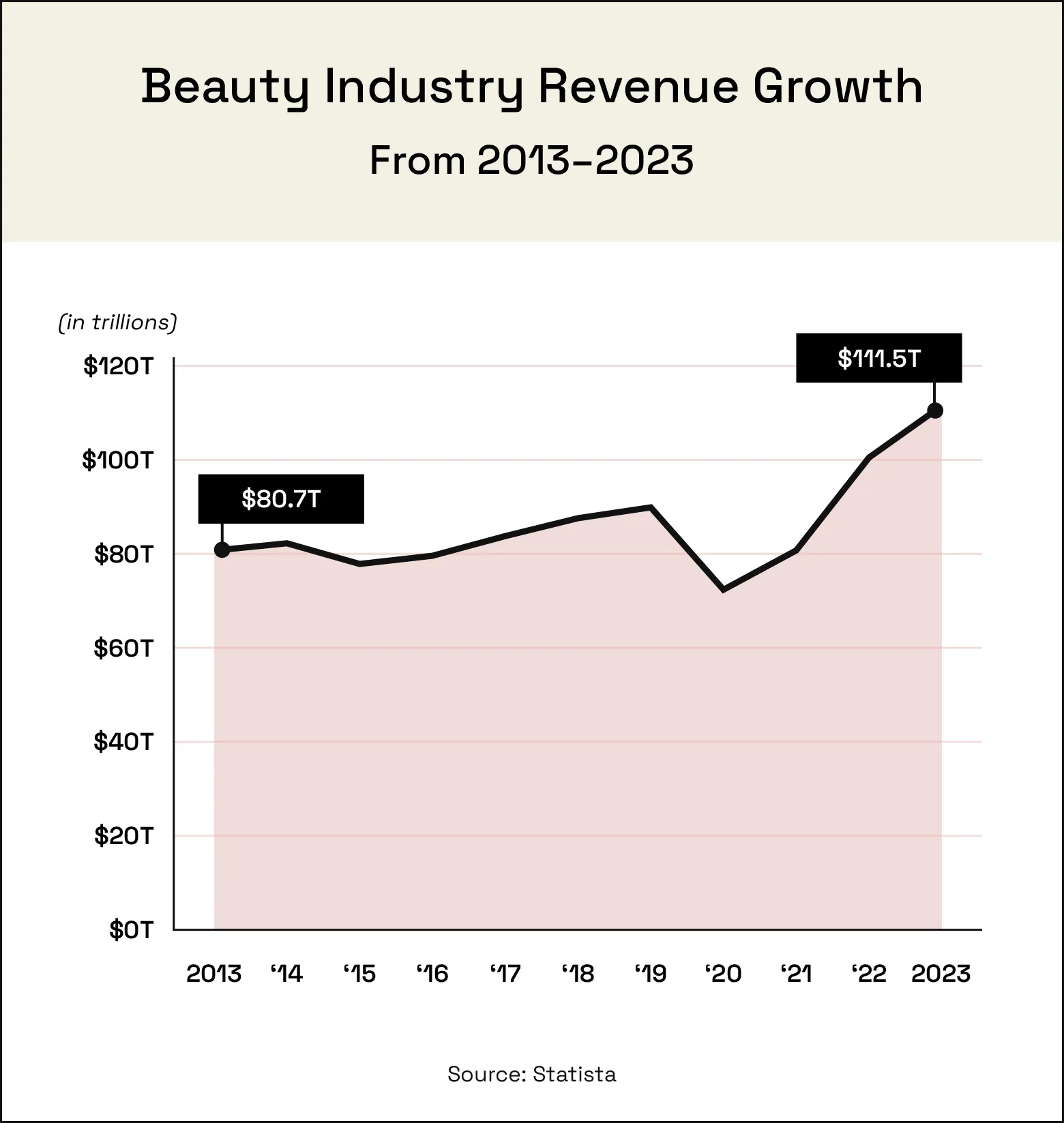
- Center parts, colored eye makeup, and acrylic nails were the most popular beauty trends of 2022. (StyleSeat)
- Organic and natural beauty products are on the rise, with the market estimated to hit $54 billion in 2027. (Grand View Research)
- 25% of consumers claim they only buy eco-friendly beauty products, while over three-quarters are concerned about the environmental impact of the products they buy. (GreenPrint)
- 92% of buyers claim they’d be more loyal to cosmetic brands that supported environmental or social causes. (Forbes)
- 67% of beauty shoppers turned to social media influencers to seek information about beauty products before making a purchase, followed by third-party reviews (59%), and beauty professionals (55%). (HBS)
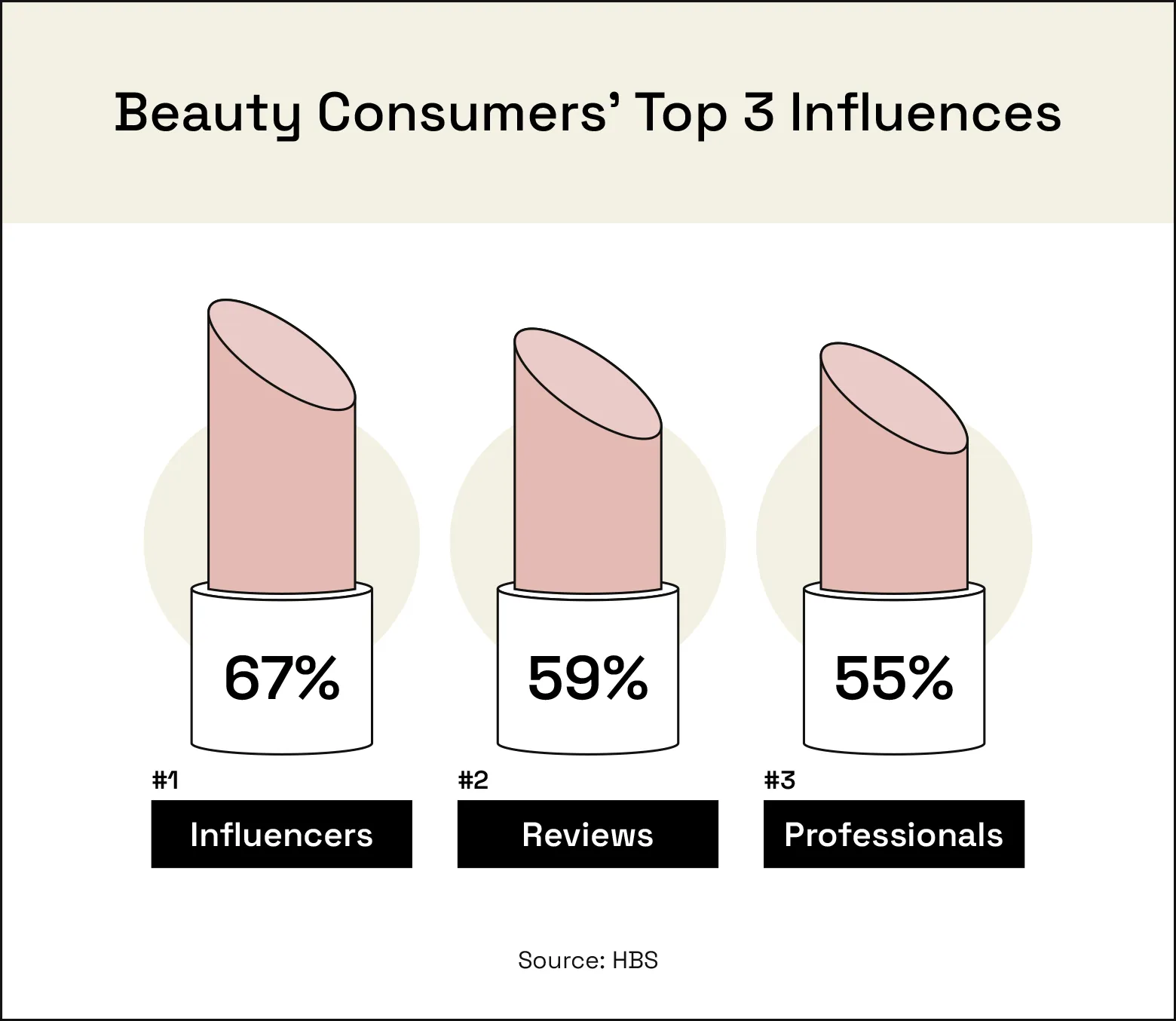
- 79% of social media users encounter influencers, with the majority seen on TikTok (94%) and Instagram (88%). (StyleSeat)
- 44% of beauty salons said they were focusing on growing their social media profiles in 2022, while 35% of hair professionals and stylists claim their growing social following was their biggest opportunity for business growth. (Professional Beauty)
Hair salon industry statistics
Though 21% of women chose to cut their hair at home this year, hair salons and stylists aren’t going anywhere in 2023. Despite significant losses during the pandemic, the hair salon industry made waves in 2022 as consumers experimented with trending ‘90s hairstyles and embraced their natural texture.
Check out these current hair salon market statistics for an in-depth look at what 2022 brought to the industry:
- The market size of the U.S. hair salon industry was $48.3 billion in 2022. (IBISWorld)
- Compared to a 40% drop in revenue in 2020 due to the COVID-19 pandemic, the salon industry experienced substantial growth of approximately 17% in 2022. (Statista)
- The 50 largest salon operators generate approximately 15% of the industry’s revenue. (First Research)
- 92% of a salon’s income is from cut, styling, and color services, followed by retail sales (8%) and care services (7%). (The Salon Business)
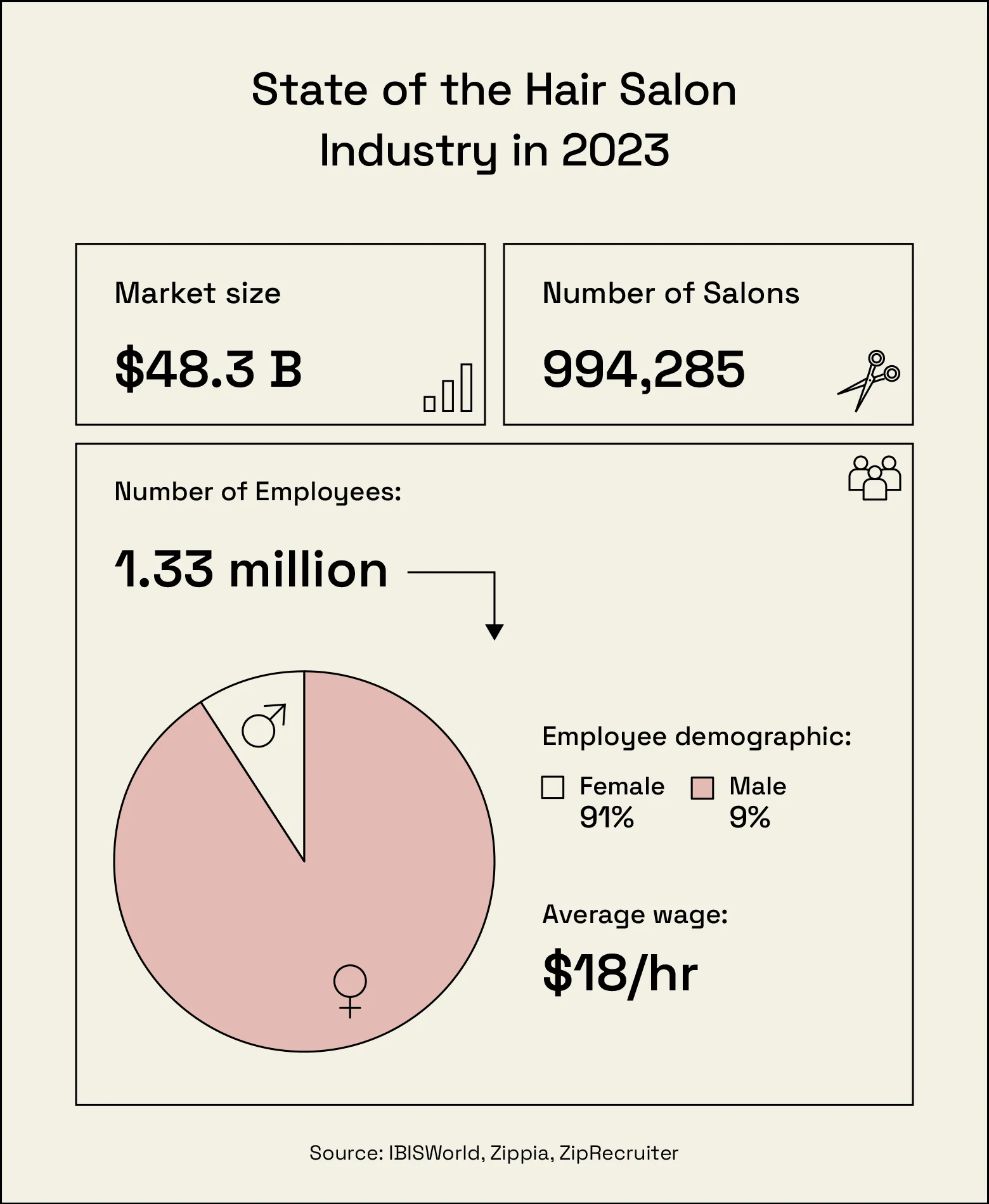
- There were 994,285 registered hair salons and 1.33 million employees in the United States in 2022. (IBISWorld)
- Of those employed, 91% of hair stylists in the U.S. identify as female. (Zippia)
- The average hourly wage of a hair stylist in the United States is $18 as of December 2022, though the range is between $11.78 and $20.19. (ZipRecruiter)
- Beauty salons account for 95%of industry revenue — barbershops make up the other 5%. (Trafft)
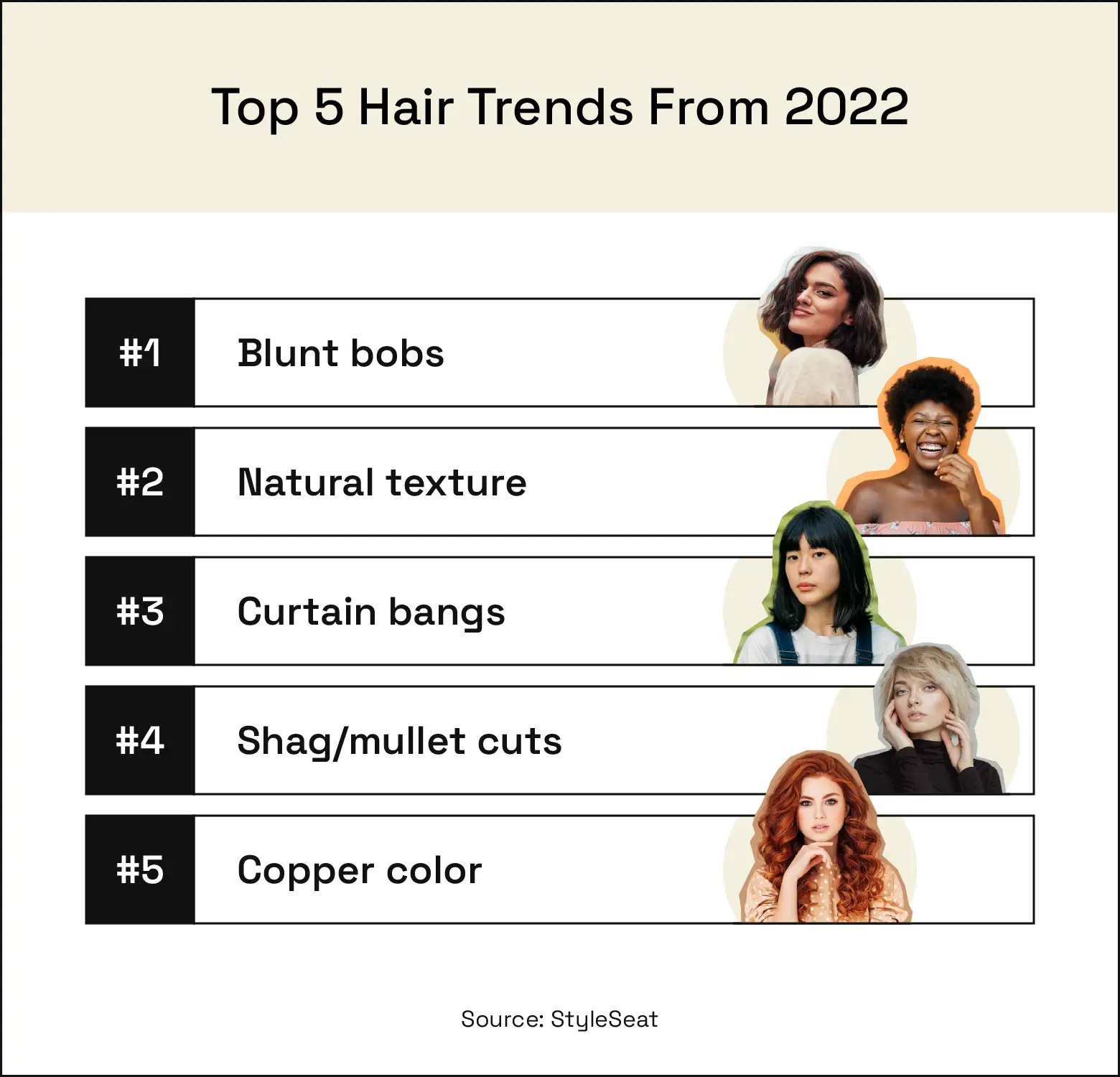
- Retro hairstyles like curtain bangs, shag cuts, and mullets made a comeback in 2022. (StyleSeat)
- The natural hair movement continued to flourish in 2022, evident by the 34 million posts tagged under “natural hair” on Instagram. (Instagram)
- 78% of beauty and hair professionals agree that a strong social media presence will help them attract higher-paying clients. (Professional Beauty)
- Nearly 1 in 4 Americans said they spend the most on haircuts and services compared to other beauty expenses. (StyleSeat)
- About 70% of U.S. women invest in hair coloring and styling. (Statista)
- No matter the country, women choose to bleach or dye their hair blonde more than any other hair color. (Statista)
- The price of hair services increased by 5.16% in 2022 versus 2021 due to rising inflation costs. ((U.S. Bureau of Labor Statistics)
Average Price of Popular Hair Services
| Service | Average cost |
|---|---|
| Haircut | $10-$90 |
| Color services | $75-$200+ |
| Highlights | $20-$200 |
| Brazillian blowout | $75-$325 |
| Faux locs | $130-$800 |
| Silk Press | $60-$100 |
| Perm | $80-$400 |
- The U.S. state with the most expensive men’s haircut is Delaware at $42; West Virginia is the cheapest, averaging just $15 per cut. (StyleSeat)
- California is the most expensive state to get a women’s haircut, with prices averaging $93 — 81% more than a cut in Wyoming, which averages around $17. (StyleSeat)
Skin care industry statistics
Unlike its salon counterparts, at-home skin care has seen an unprecedented resurgence due in large part to the Work From Home Movement. With more time on their hands, consumers seeking healthy, glowy skin took to social media to research niche products, new ingredients, and trending regimens.
Just a few years later, the skin care market share has eclipsed both hair and makeup as the largest beauty industry subcategory with 42% of the global market share. These stats cover just how prevalent skin care was in 2022:
- The skin care industry generated $19.92 billion in the U.S. this past year, with the market expected to grow 3.91% annually. (Statista)
- Facial skin care products generated 71% of market revenue, followed by body products (20%). (Statista)
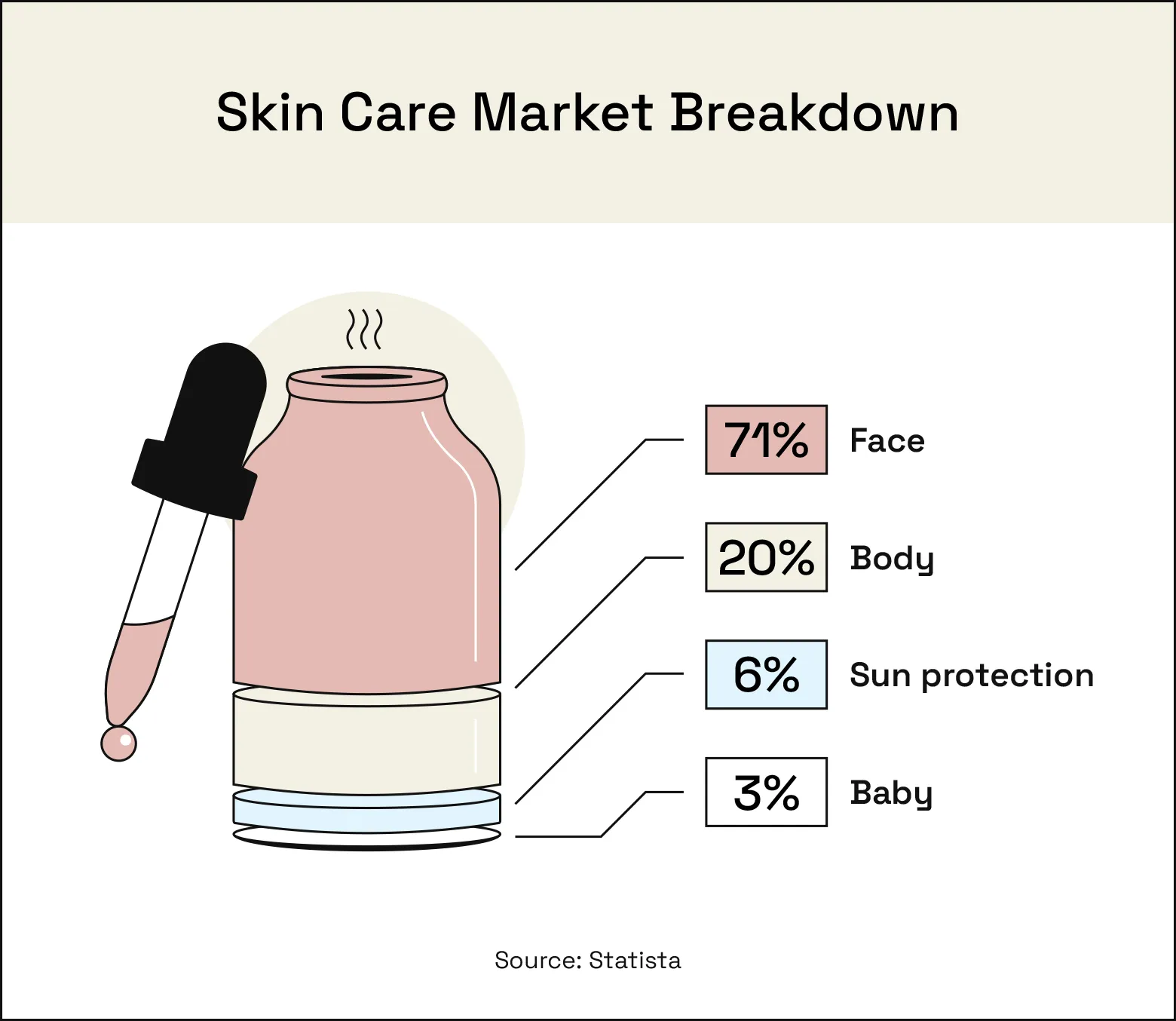
- Prices for products spiked in 2022 due to inflation, with sun protection products experiencing an astonishing 22.3% increase. (Statista)
- While brick-and-mortar stores are still the #1 destination for skin care shoppers, online sales increased by 12% in 2022 and are projected to rise. (Statista)
- The United States has the largest skin care market ($19.2 billion), followed by Japan ($17.8 billion) and China ($15.6 billion). (Statista)
- 22% of women report spending more time and money on skin care since the start of the pandemic. (NPD)
- Women use an average of five skin care products per day. (NPD)
- Cleanser products have experienced a resurgence since 2020, with 38% of consumers using cleansers multiple times per day. (NPD)
- 58% of female and 61% of male consumers prefer to purchase natural or organic skin care products. (Statista)
- 50-to-64-year-olds make up 30% of skin care users, followed by 30-to-39-year-olds (26%) and 18-to-29-year-olds (24%). (Statista)
- 76% of consumers look for special offers when shopping for skin care products. (Statista)
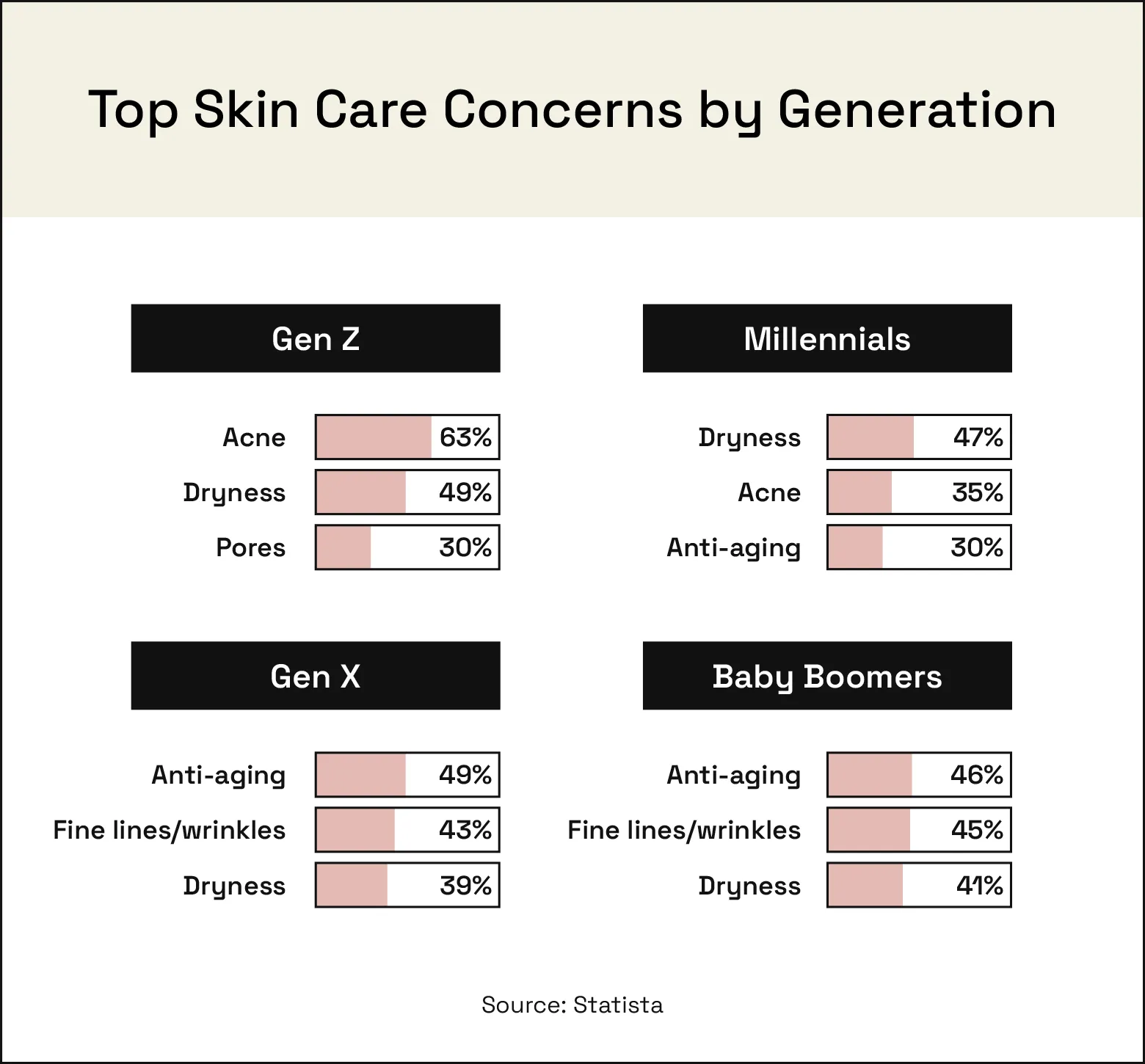
- 63% of Gen Z consumers said acne was their top skin care concern, followed by dryness (49%) and pores (30%). (Statista)
- Gen X and baby boomers are most concerned with anti-aging and fine lines and wrinkles. (Statista)
- 47% of millennials said dryness was their top skin care concern. (Statista)
- Retinol was the most popular skin care trend of 2022 according to social media and Google search, along with gua sha and SPF. (Hey Discount)
- The three leading skin care brands amongst Gen Z consumers are CeraVe (owned by L’Oréal), Cetaphil, and The Ordinary. (Piper Sandler)
Makeup statistics
Top makeup influencers like Jackie Aina, Mykie Mountain, and Manny Gutierrez have had a substantial impact on the makeup industry this year. By showcasing new, specialized products, emerging brands, and the latest trends, this small percentage of cosmetic consumers have shaped the behavior patterns of the majority.
Some of the most notable changes to take hold in 2022 include the rise of gender-neutral products and lines, resurgence of ‘90s bold makeup trends complete with colorful eye makeup and gems, and preference for eco-friendly, nontoxic formulas.
While 2022 no doubt experienced a shift in consumer expressionism and corporate ethics, these statistics show just how much new makeup trends and values have shaped the industry:
- Makeup products represent 18.2% of the overall global beauty market, and generated about $77.8 billion in 2022. (Statista)
- The global makeup market is expected to reach $89.3 billion by 2025. (Statista)
- US beauty and cosmetic retailers generated roughly $15.6 billion in online sales in 2021; revenue is expected to increase an additional $5.7 billion in 2023. (Statista)
- 67% of women use makeup products, with usage over 80% for those with higher household incomes. (NPD)
- 46% of women report wearing more makeup today than they did during the pandemic. (NPD)
- 28% of makeup users say their #1 reason for wearing makeup is because it brings them joy. This is especially true for Gen Z (46%) and millennials (36%). (NPD)
- Graphic liner, ombre lips, and faux freckles were some of the hottest 2022 makeup trends according to social media and Google search. (Hey Discount)
- Since the mask mandate was lifted, about 70% of makeup wearers have returned to their previous routine or report wearing more makeup than they did prior. (NPD)
- Mascara is the most-used makeup product, followed by foundation and eye shadow. (NPD)
- Almost all consumers (99%) read the reviews before purchasing beauty products online. (PowerReviews)
- L’Oréal leads the cosmetic product market with over $35 billion in global sales in 2021 — nearly $11 billion more than runner-up Unilever ($24 billion). (Statista)
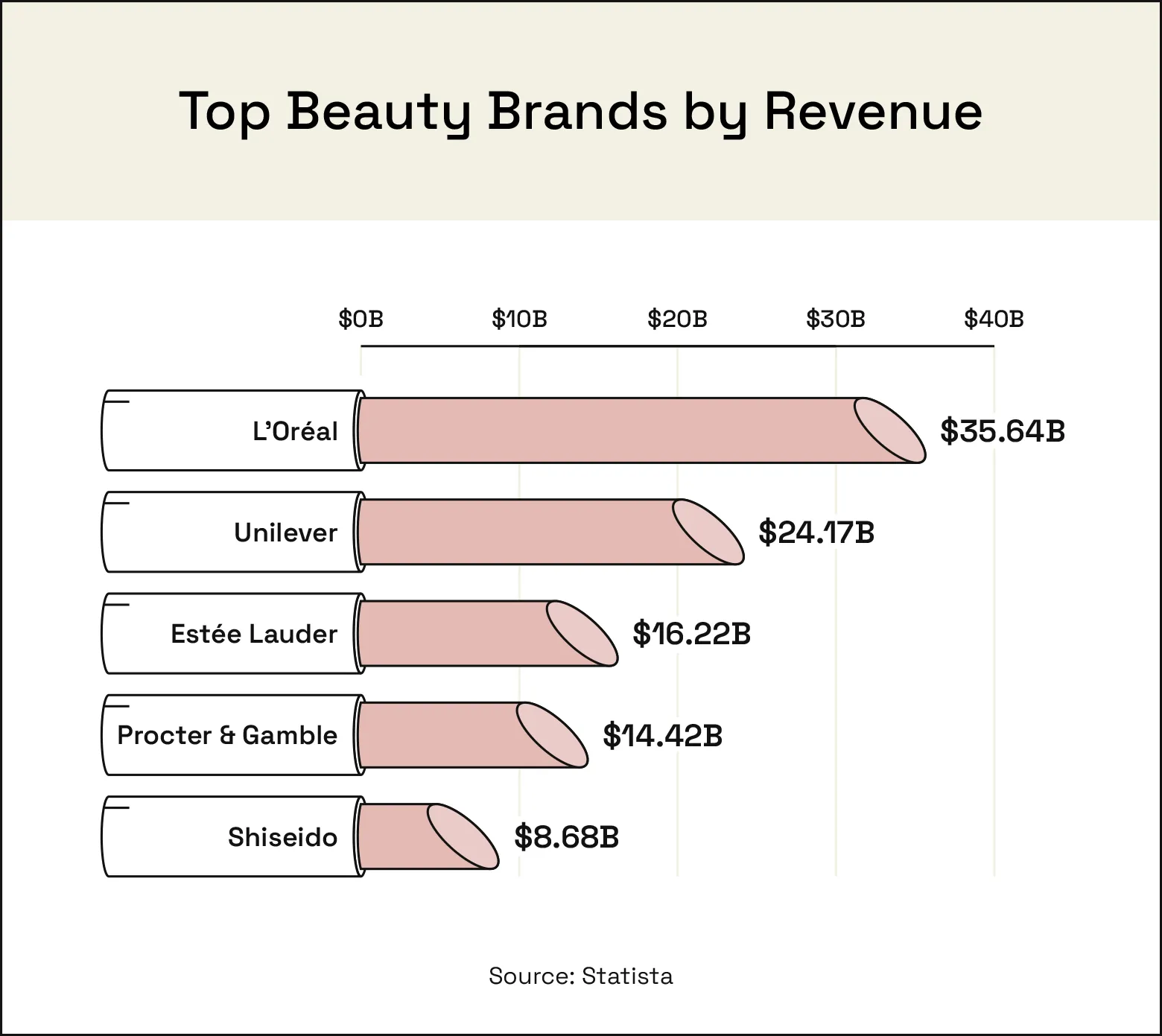
- Professional makeup artists charge anywhere from $100 to $400 per session, depending on experience, location, products used, time spent, and more. (StyleSeat)
- The average makeup appointment cost is around $100, although special occasion makeup averages $120. (StyleSeat)
- New Jersey has the highest average cost of a makeup appointment at $117, compared to just $28 in Nebraska. (StyleSeat)
Nail care and salon statistics
Despite nationwide salon closures in 2020, the nail salon industry has managed to grow at an annual rate of 2.2% over the past three years. This is in large part due to influencer marketing and the demand for specialized services, such as acrylics and extravagant nail art.
However, at-home nail products also experienced a notable revenue increase in 2022, with many brands struggling to keep their own shelves stocked.
- In 2021, the nail salon industry generated $6 billion. (Market Research)
- Nail product counts are up 3% from 2021 and 23% from 2020. (TechNavio)
- More women are opting for DIY manicures, with approximately 100 million women in the U.S. painting their nails at least once a month. (Statista)
- Vibrant colors and creative nail art dominated in 2022, with searches like “yellow nails” and “green nails” exhibiting huge increases in search volume on Pinterest. (StyleSage)
- “Male manicures” saw a 457% spike in online searches thanks to celebrities like Harry Styles and Machine Gun Kelly who have popularized the “man-icure.” (Lookfantastic)
- The average cost of the top nail services in 2022 include:
| Service | Cost |
|---|---|
| Standard manicure | $20-$40 |
| Standard pedicure | $25-$40 |
| Design add-on | +$10 |
| Acrylics (full set) | $25-$120 |
| Acrylics (fills) | $15-$20 |
| Dip powder | $35-$50 |
| French | +$5-$15 |
| Gel (full set) | $25-$65 |
| Gel (fills) | $15-$20 |
| Stone pedicure | $45-$50 |
| Paraffin treatment | +$40 |
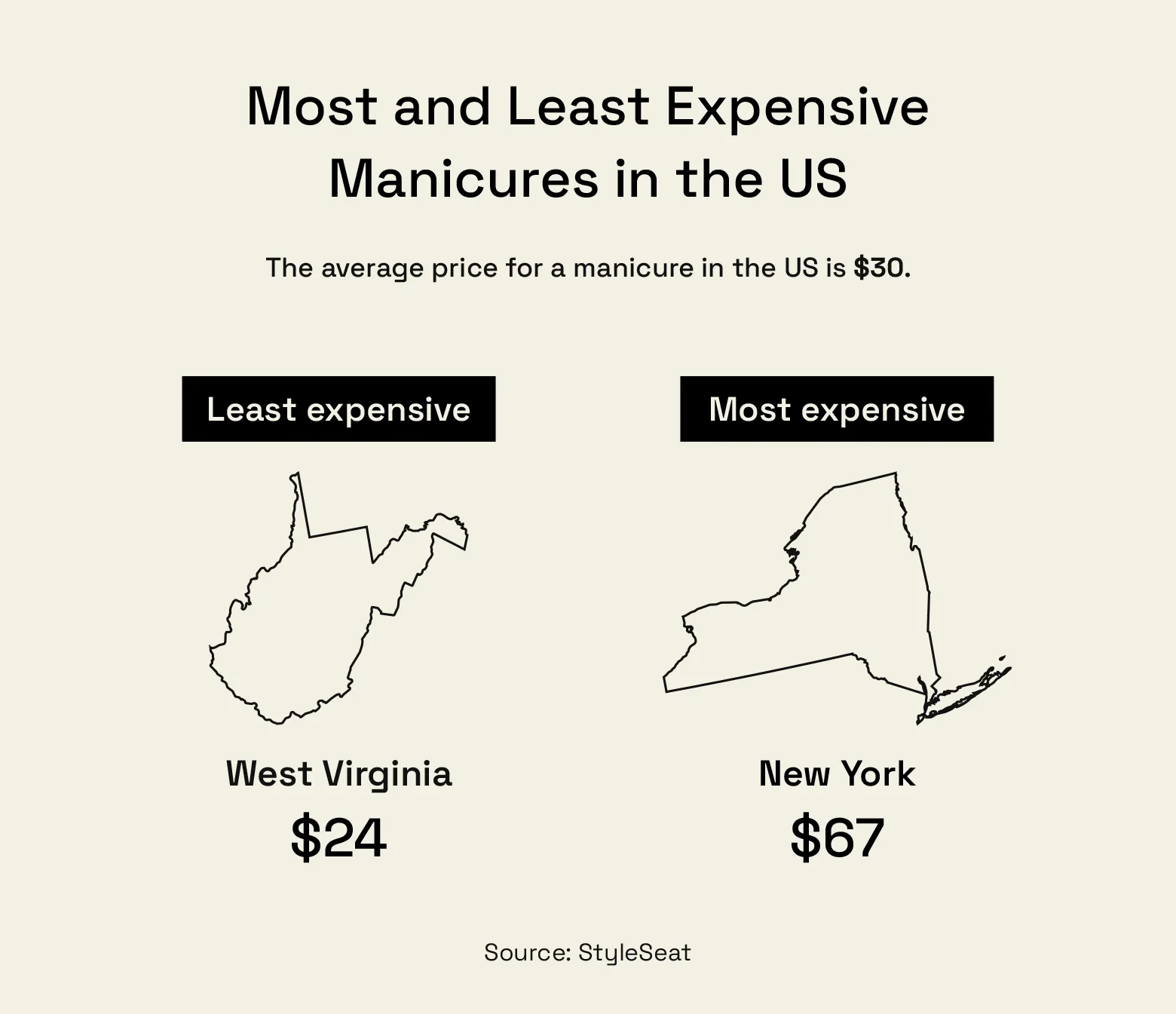
- Nail services are most expensive in New York, with an average of $67 for a manicure. (StyleSeat)
- You’ll find the cheapest manicure in West Virginia — the average appointment is only $24. (StyleSeat)
The rise in noninvasive cosmetic procedures since the onset of the pandemic — affectionately referred to as the “Zoom Boom” — is still prevalent in 2022. With many people working from home, downtime from cosmetic treatments, which was once a major concern amongst consumers, is now a nonissue.
The WFH movement has also influenced the no-makeup natural beauty look many millennials embraced in 2022. See how new beauty trends impacted the cosmetic dermatology industry in the past year:
- The global dermatology market was worth $13.9 billion in 2022 and is expected to grow at an annual rate of 11.9%. (Grand View Research)
- Dermatologists are the number one influencer that impact consumers’ decisions to have a cosmetic procedure. (ASDS)
- Almost 70% of consumers are considering a cosmetic treatment. (ASDS)
- More than 3.65 million cosmetic procedures involving neurotoxins (e.g., Botox) were performed in 2021. (Statista)
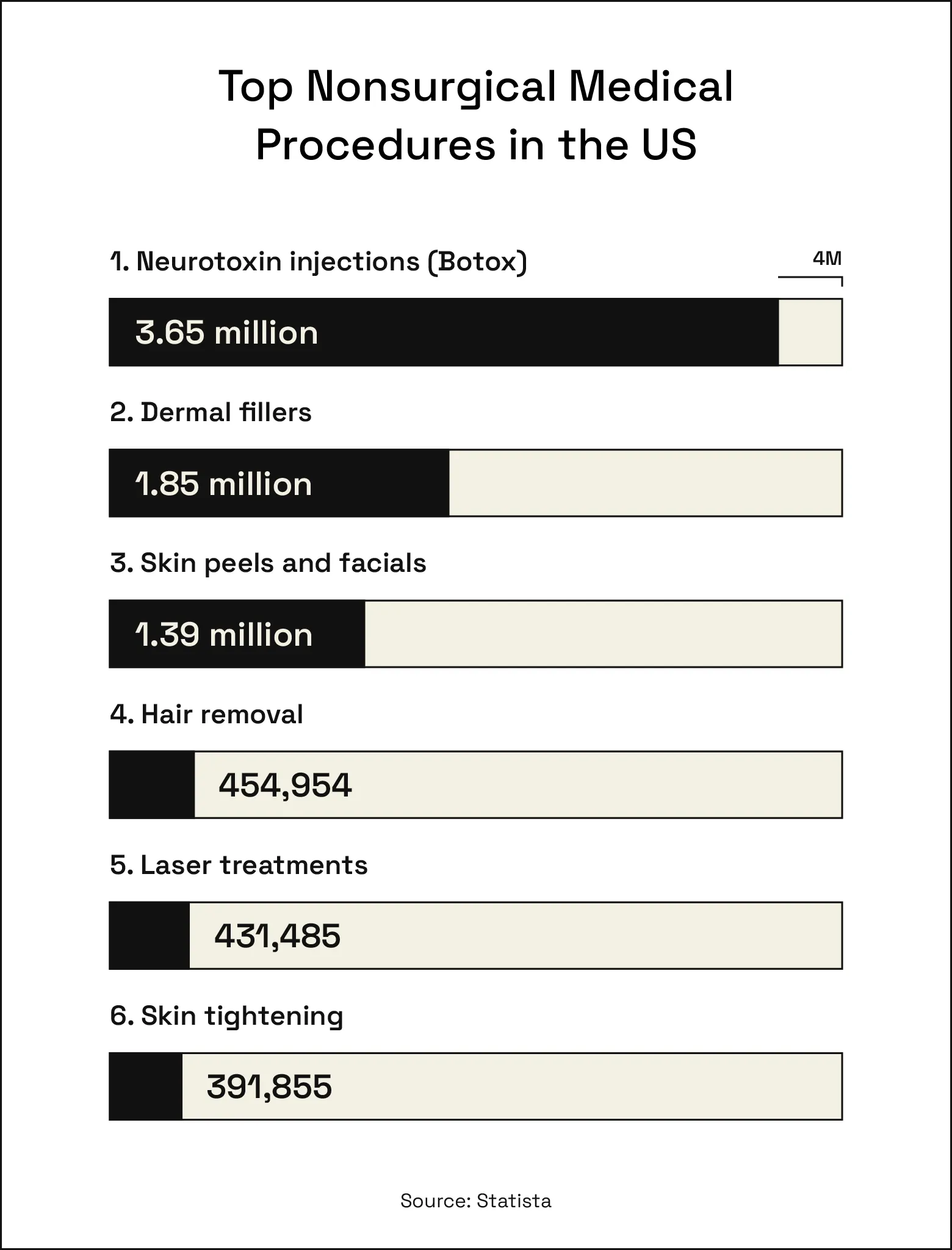
- Lip lifts are replacing lip fillers — 7 out of 10 doctors performed this procedure in 2021 as “filler fatigue” took social media by storm. (AAFPRS)
- 52% of consumers were impacted by a provider’s social media presence before scheduling an appointment, up from only 9% in 2019. (ASDS)
- 83% of consumers relied on rate-and-review sites when choosing a cosmetic procedure provider. (ASDS)
Men’s grooming statistics
Perhaps the most significant trend to impact the beauty industry in 2022 was the rise of gender-fluid brands and products, resulting in a new take on “masculinity” as male consumers began to experiment with products traditionally only marketed toward women.
The stigma around male grooming for aesthetics is being challenged by some of today’s most influential celebrities, and 2022’s male grooming statistics prove that this evolution of masculinity isn’t just impacting a small percentage of men:
- The men’s grooming market is estimated to be valued at $81.2 billion. (Statista)
- For the first time in history, men are spending more money on male-specfic toiletries — most notably, skin care — than on shaving products. (Statista)
- The top skin care brands amongst male teens were CeraVe, Dove, and Neutrogena. (Piper Sandler)
- More than half of U.S. men (56%) use some form of makeup, pointing to the rise of gender-neutral products in 2022. (CNBC)
- 15% of heterosexual adult men in the U.S. currently use male cosmetics — and another 17% would be willing to try them. (Ipsos)
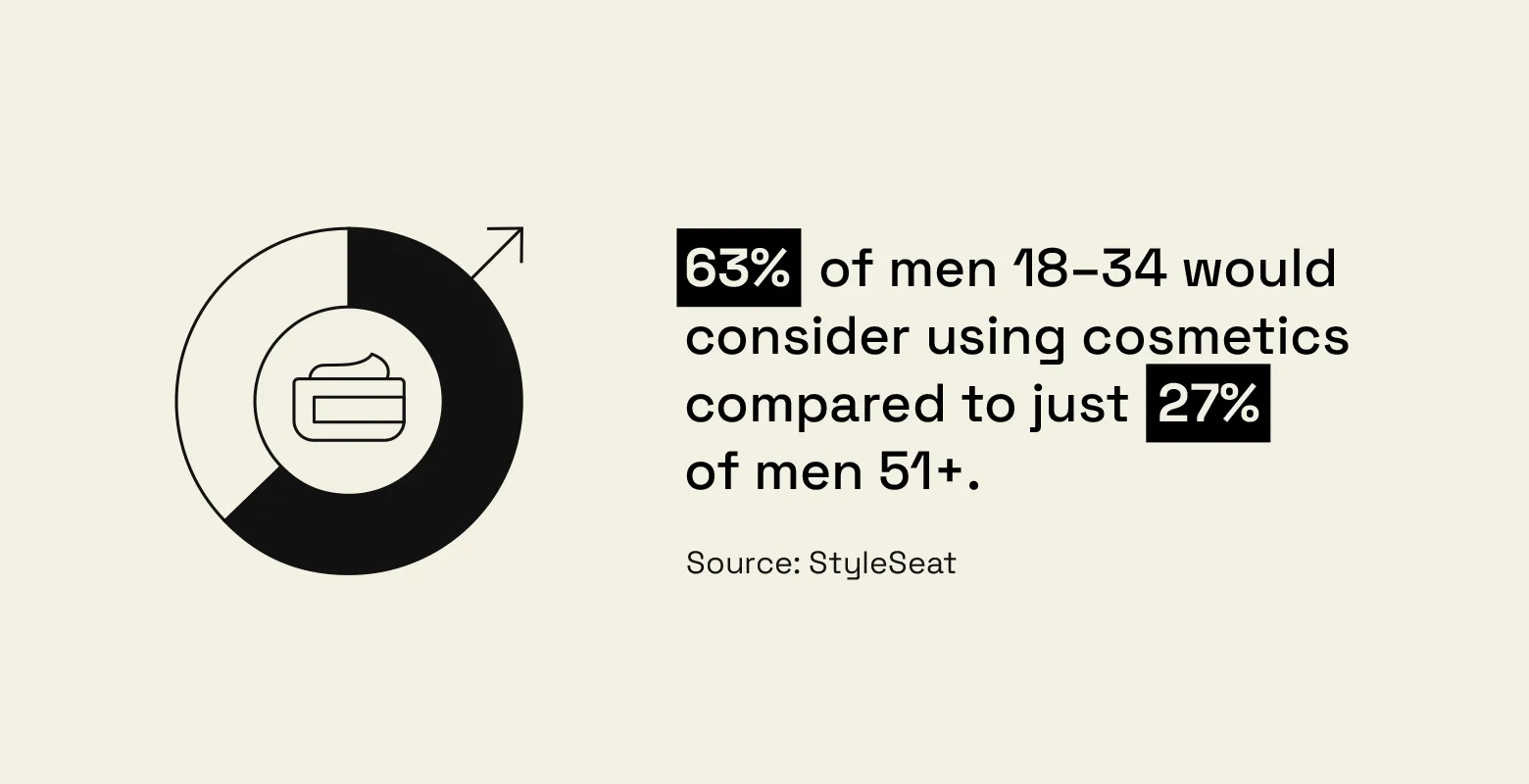
- However, 73% of males over 51 said they would not consider using cosmetics, versus only 37% of males 18-34 — suggesting a significant generation gap around men’s cosmetics. (Ipsos)
- Males 18-34 are only 4% more likely to purchase beauty products from a “traditional men’s brand” compared to a “women’s brand.” (Ipsos)
- Harry Styles’ Pleasing, Machine Gun Kelly’s UN/DN, and Pharrell Williams’ Humanrace were some of the most talked about gender-neutral beauty lines in 2022. (Vogue)
- Many brands are making an effort to include all gender identities in their marketing efforts — and engagement with gender-inclusive content has increased by over 50%. (Traackr)
FAQs
The global beauty industry market size is estimated to be worth $571.1 billion in 2023 — an impressive 8% increase year over year. This is in large part due to increasing digital channels, influencer marketing, and a higher value consumers have placed on self-care post-pandemic.
The largest global beauty brand is L’Oréal, which had a brand value of $38.3 billion in 2021. L’Oréal and its subsidiaries — including Lancôme, Garnier, CeraVe, and Kiehl’s — have dominated global markets, with over 20% of the market share in Europe and more than a quarter of the market share in the U.S. for their perfumes and fragrances.
Based on our research, Americans spend an average of $46 a month on beauty products and services, which equates to $552 annually.
There are 979,236 hair salons in the U.S. as of September 2022 — a 1.1% increase from 2021.
What to look forward to in 2023
With the stats to prove it, the future of the beauty industry looks bright for 2023. Social media and influencer marketing will continue to play a huge role in consumer behavior, especially in the skin care and makeup markets. Men’s grooming will also see a dramatic increase in the variety of products and services offered, thanks to celebrity influences introducing a more expressive side of masculinity.
Ready for a glow-up in 2023? Schedule an appointment with a beauty professional to get this year’s look.
